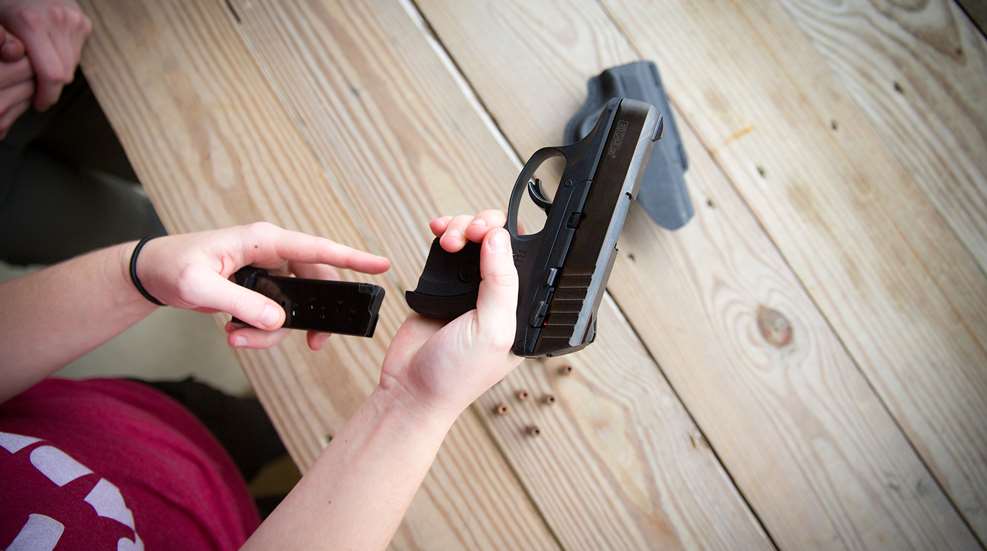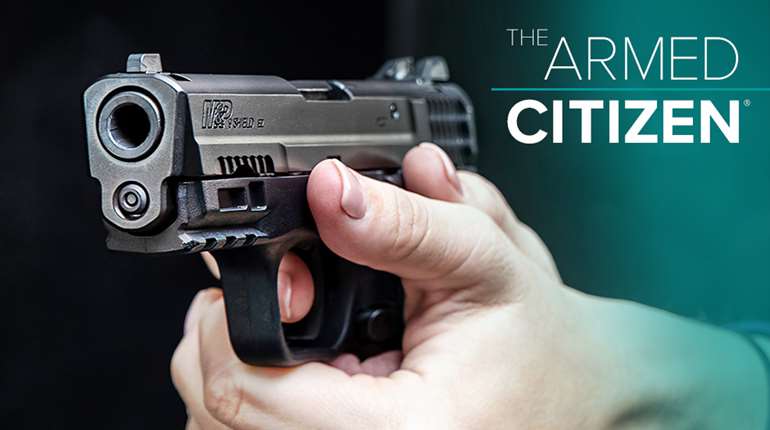
As an NRA Certified Firearms Instructor, it is my job to use the correct gun terminology—and also to teach my students to use the correct terminology. After all, firearms have their own language with unique words, phrases and meanings. One of the first things I typically ask my students is, “Can we call a magazine a clip?” Usually about half of the class answers, “Yes.”
To put it bluntly, there are no clips in firearms. Magazines hold ammunition until it is fed into the firearms chamber. Clips assist in loading ammunition into the firearms magazine.
There are three common types of clips: stripper clips, en bloc clips and moon clips. Stripper and en bloc clips are used to load ammunition into semi-automatic firearms. Moon clips are used in loading ammunition in a revolver’s cylinder.
Clips
Stripper Clips
Stripper clips are usually a strip of metal that holds ammunition in a single file before the rounds are loaded into a firearm’s magazine. Once the stripper clip is loaded, it is then inserted into a cut out of a magazine or a cut out in the top of the receiver in the opening of the breach. Stripper clips are usually discarded once the ammunition is loaded into the magazine. The type of magazine determines where the stripper clip is used.
If the firearm has a detachable magazine, the stripper clip is inserted in the top of the magazine. Once it is inserted in the top of the magazine, the rounds are then pushed down with the thumb until all the rounds are in the magazine. Once the magazine is full it can then be inserted into the firearm.
If the firearm has an internal box magazine, the stripper clip is designed to be inserted in the top of the receiver in the breach. Once the stripper clip is inserted, the rounds are also pushed into the firearm’s magazine with the thumb.
Stripper clips can be described as speed loaders for magazines.

En Bloc Clips
En bloc clips are used primarily firearms with internal box magazines. These types of clips are metal devices that hold up to eight rounds of ammunition. The block of ammunition is then pushed through the breach and into the firearm’s magazine.
En bloc clips stay with the ammunition in the magazine. After the last round is fired, the clip is then ejected out of the magazine through the breach making room for the next en bloc clip to be inserted. Most firearms designed for en bloc magazines will not work without the device inserted along with the ammunition into the magazine.

Moon (Full & Half) Clips
 Moon clips are used in revolvers. The clips that fall in this category load the cylinder of the revolver with ammunition. The cylinder acts as a type of magazine for this type of handgun. Some revolvers cannot be operated without the use of moon clips. Revolver cylinders that use moon clips must be milled to be able to accept the devices. Moon clips cannot be used in revolver cylinders that are not milled to accept them.
Moon clips are used in revolvers. The clips that fall in this category load the cylinder of the revolver with ammunition. The cylinder acts as a type of magazine for this type of handgun. Some revolvers cannot be operated without the use of moon clips. Revolver cylinders that use moon clips must be milled to be able to accept the devices. Moon clips cannot be used in revolver cylinders that are not milled to accept them.
Moon clips are a necessity for revolvers chambered for rimless cartridges. Rimless cartridges are usually semi-automatic calibers such as .45 cal., .40 cal. and 9 mm. Examples of rimmed revolver cartridges are .357 Mag. and .44 Mag. A revolver’s cylinder uses the rims of the cartridges to keep the rounds in place to be fired. Without moon clips, rimless ammunition would fall through the cylinder, preventing completion of the firing sequence.
Moon clips can either be half clips or full clips. Half clips hold three rounds of ammunition. Revolvers that hold six shots would need two moon clips to fill the cylinder. Full moon clips contain either six rounds or eight rounds, depending on the capacity of cylinder of the specific firearm. Like the other types of clips, moon clips also serve as a speed loader for a revolver.
Magazines
Detachable Magazines 
Detachable magazines are removable from the firearm. These types of magazines are loaded with the proper ammunition and then inserted into the firearm to be discharged. Detachable magazines can be found in just about any type of action except single shot or break actions. Pistols, rifles and shotguns can have these types of magazines.
There are many types of detachable magazines. They are found in fully automatic, semi-automatic, and manual-action firearms. Some of the types of detachable magazines are box, drum, rotary, casket, pan and helical.
Box: Cartridges in a column or offset columns
Drum: Cartridges in a circular configuration outside of a rotating follower
Rotary: Cartridges inserted in a cylindrical sprocket that rotates after each shot
Casket: Also referred to as a “quad column.” This magazine is wide at the bottom to hold four columns of cartridges, but then narrows to the standard size detachable box magazine. The narrow end offsets the cartridges so that the bolt picks up one round at a time.
Pan: Cartridges configured in a flat radial arrangement
Helical: Cartridges in a spiral configuration inside an elongated drum
Internal Box Magazines
Internal box magazines are accessed through the open breach. The action is opened, and each round is singularly pushed through the breach into the magazine. When the round is fully pushed into the magazine, there is usually an audible click. This type of magazine normally holds between four and five rounds. Cartridges are set in a column or offset column configuration. Internal box magazines either have a floorplate or come without a floorplate underneath the firearm. Floorplates are hinged and can be opened to unload the magazine. Firearms without a floorplate must be unloaded by cycling the ammunition through the action.
Tubular Magazines![]()
Tubular magazines are located beneath the barrel of the firearm. Ammunition is loaded into the magazine in the same direction that the bullet exits the barrel. As the ammunition is loaded, the tip of one bullet is in contact with the case head of the cartridge loaded before. It is important use the ammunition designed for tubular magazines, especially in lever action rifles. The wrong ammunition could cause a chain fire setting off one or more rounds in the magazine.
There are several ways of loading a tubular magazine. The firearm determines which method to use. Some tubular magazines are loaded through a loading gate on the front of the receiver. Shotgun tubular magazines have the loading gate under the receiver.
Some rifles have a cutout in the magazine that is in the shape of the cartridge. Other rifles have a hole in the buttstock where the rounds are inserted. Both of these methods of loading the tubular magazine are accomplished by removing a plunger. The plunger not only closes the magazine but also is spring loaded to push the rounds forward into the action.
Using the correct terminology during firearm instruction ensures that future generations of shooters are well on their way to doing the same.














































